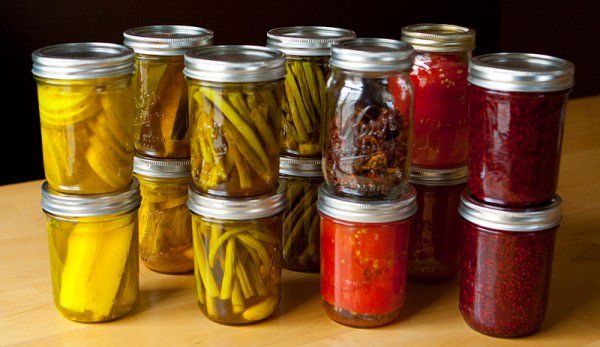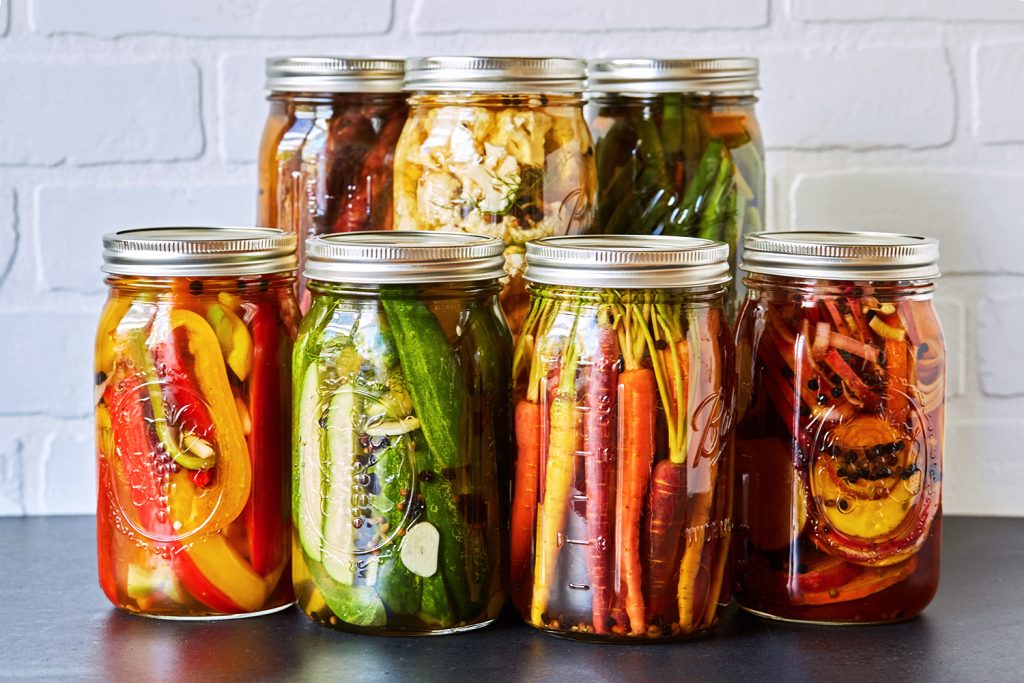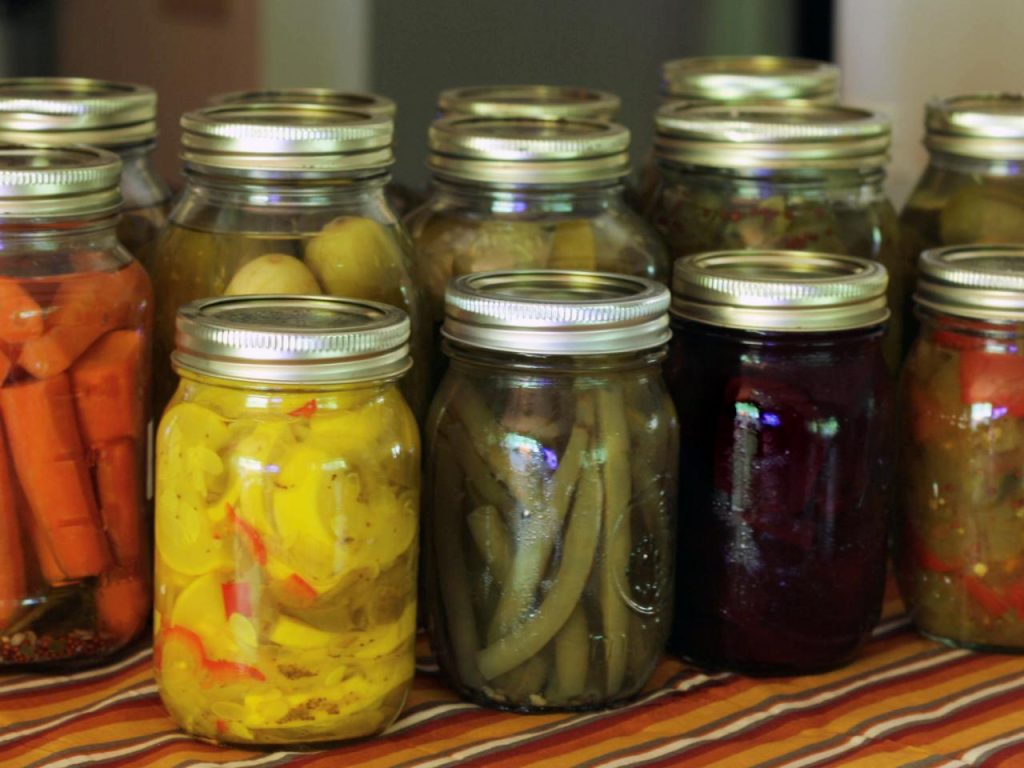Is it Necessary to Keep Pickles Refrigerated?
Pickled goods of all kinds may add a variety to your winter menu, not only with fresh flavors but also with necessary components that everyone lacks during the cold season when fresh vegetable options are restricted. Pickles are the most famous types of vegetables to preserve, and this article will go over the pickle preservation rules.
Is it necessary to keep pickles refrigerated? Yes, if you want them to stay fresh for an extended period of time. Pickles have low acidity, so they soften and lose their taste and scent while preserved, especially at high temperatures — the lower the storage temperature, the smaller the risk of negative consequences. Pickles can be preserved in the refrigerator for almost a month after they’ve been opened without losing their flavor.
In this article, we’ll go over all of the many ways to preserve pickles, and some of them may surprise you. How should the product be prepared for pickling? What are the ground rules? How long should you keep an open jar of pickles in the refrigerator? This page contains all of the important answers.
How to Keep Pickles Safe
- So, what’s the best way to store pickles? Pickles should be preserved at a temperature of 32 to 34 degrees Fahrenheit, which can be achieved simply by refrigerating them. Pickles can also be frozen to keep them fresh over the winter months. Pickles are not something that most people consider freezing.
- Pickles are typically refrigerated between 30 and 50 degrees Fahrenheit. The shorter the shelf life, the higher the temperature; it also increases the chances of side micro-flora growth, which affects the product’s quality.
- As a result, the optimal temperature for storage is between 30 and 34 degrees Fahrenheit. Pickles can be preserved for up to 1-2 years under these conditions.
- The shelf life of pickles is affected by the environment under which they are stored. Pickles can be stored in a firmly sealed plastic container without brine which is followed by salting during natural fermentation. This can be done using a plastic container or a bucket with a lid.
- Put a layer of dry mustard powder 0.5 inches thick at the bottom of the container, then arrange the first layer of pickles on top and cover with mustard. The remaining layers should be prepared in the same manner, following which the container should be carefully closed with a lid and placed in the refrigerator.
- The temperature in the storage chamber should be between 32 and 34 degrees Fahrenheit. Pickles can be preserved for up to 1-2 years under these conditions. Pickles should be removed, rinsed with mustard, and consumed if they are required.
- Don’t forget to close the container firmly. Temperatures between 30°F to 40°F, with an air humidity of 80–90%, are ideal storage conditions for pickles. Pickles can be preserved for 8–9 months in these conditions.
The flavor of pickles is determined by how they are stored, with the following being the most popular:
- Frozen;
- In jars;
- In barrels.
However, each of these storage solutions has its own set of properties, which will be addressed in further depth later.
- Jars are used.
- This storage method is well-known since it is the most cost-effective and tried.
- Important! Pickles should be maintained in small portions in 1-2 liter jars to prevent spoilage after opening the jars.

Pickles should be stored in this manner according to the following guidelines:
- Pickles can be preserved for a long time if the jar is tightly sealed.
- The storage period is drastically reduced if the jar is opened and tight conditions are violated.
- The temperature in the room should be as low as possible, no more than 50 degrees Fahrenheit.
- Pickles preserved in oak barrels should be kept in brine that has been created through spontaneous fermentation at a temperature ranging from 32°F to 34°F.
- Because the fermentation process continues and the bacteria modify the makeup of the brine over time, the pickles within begin to deteriorate, storage of these pickles is only possible for a short time.
- After that time period pickles get softer, the taste changes; the odor changes and pickles become mucus-covered.
- So, they should be kept frozen to ensure that their shelf life is longer.
- Many people are shocked to learn that pickles may be frozen for the winter, not just conceptually but practically. After opening a jar of pickles, thrifty women undoubtedly wondered if they could freeze them, as they did many other fresh vegetables.
- Important! Pickles can only be used in meals that involve heating after they have been defrosted.
- If you wish to freeze pickles, you should be aware of the following technology:
- Pickles are removed from the brine, dried, and stacked in a plastic zip bag. The bag should be placed in the rapid freeze compartment. They can then be moved to the main freezer for long-term preservation.
- There is one drawback to storing pickles in the freezer. Pickles maintain the most beneficial microelements – vitamins and minerals – while also retaining their taste and scent. However, they soften, lose elasticity, and become soft, but this will not detract from the meal in any way.

How can you make your pickles for the winter?
- They should not be frozen whole for soups or other meals because they will be difficult to ground when defrosted. It is important to get rid of any excess moisture after grinding. This is where absorbent paper towels come in handy. Shock freezing is the best method for freezing pickles.
- This method of freezing will help to preserve their inherent features. Arrange the pickles on a cutting board.
- Please place it in the freezer for 60 minutes after that. Finally, please place them in bags or containers.
- Pickles should be placed on the lower shelf of the refrigerator to thaw for several hours.
- Is it possible to freeze pickles a second time? We don’t recommend re-freezing pickles because they’ll lose their distinctive flavor.
- Important! Do not forget to write the product’s name and the date on which it was put in the freezer on the box. Keep in mind that pickles should only be kept refrigerated for up to 8 months.
Do pickles have a storage period?
- If pickles aren’t preserved properly, they might go bad quickly. To save them, keep in mind the following four rules:
- Pickles should be kept at a temperature of 30°F to 39°F and at 80–90% humidity. They can be kept for 8–9 months in these conditions.
- It’s not a good idea to keep them at temperatures above 50° F.
- If they haven’t been cooked, they can be refrigerated for up to one week at a temperature of no more than 63° F.
- Pickles have a shelf life of no more than 24 hours in plastic bags at temperatures up to 63° F. The likelihood of the formation of side micro-flora, which would negatively affect the quality of pickles, is the reason for the product’s short storage duration.

How to tell if your pickles are bad.
Here are some of the telltale indicators that your pickles have gone bad:
- Clouding of the brine. The appearance of foam and bubbles inside the jar. The appearance of spots of unknown origin. The presence of mold.
- Throw such jars away to avoid putting your health at risk.
- Pickle-making issues that may arise.
- Pickle wrinkling is caused by brine with a high salt concentration, which promotes fast plasmolysis of the cells.
- Pickles are softening. Mold and yeast pectolytic enzymes can be produced by a strong softening of pickles. This is because these enzymes break down pectin components, weakening the cell-cell connection.
To make excellent pickles, follow the instructions below:
- If you want to make pickles at home, look for cucumbers with solid pulp, thin skin, a uniform green hue, and no deformation.
- Pickles that have been properly prepared are light green or yellow-green, hard and crunchy. They easily break in halves and have no voids on the defect. They have a pleasantly sour flavor and the scent of seasonings.
- Prepare a storage area before producing pickles. Do not keep pickles in plastic bags. Do not expose pickles to direct sunshine or severe frost. Remember that the ideal temperature ranges from 30 to 50 degrees Fahrenheit.
- Cucumbers will be done faster after cutting the ends off, but their storage time will be lowered. Check the jars for raids or mold. Add more herbs/spices to prevent fermentation: grape leaves, horseradish, dill, and garlic.
- A variety of activities are required for successful pickle storage. If you follow all of the guidelines outlined in this article, you’ll have no trouble storing pickles and preserving their quality for as long as possible. Pickle preservation is vital since adhering to the required parameters will result in a healthy and pleasant product followed by a delightful pickle savoring experience.











